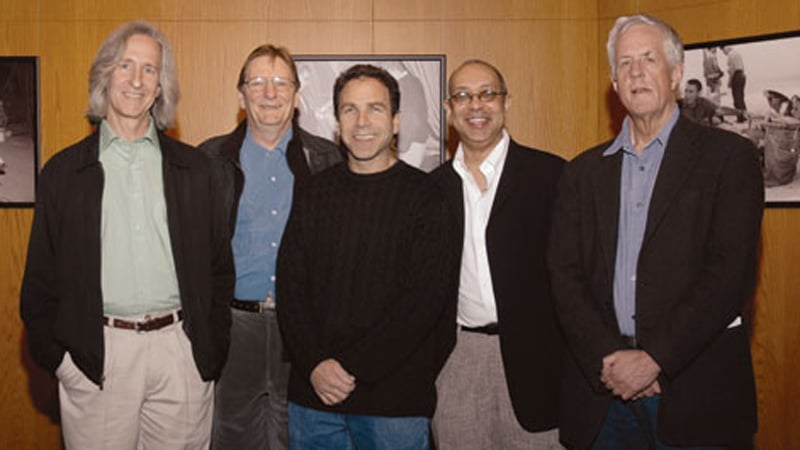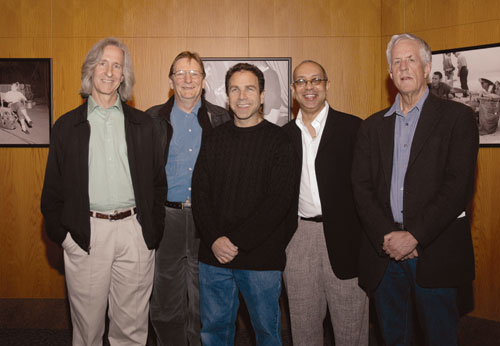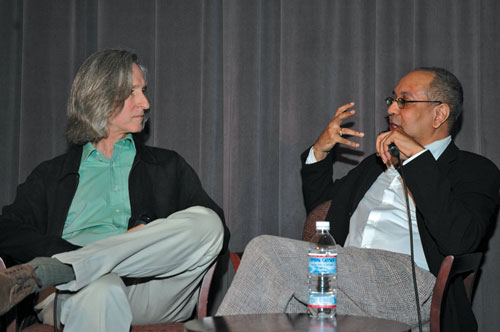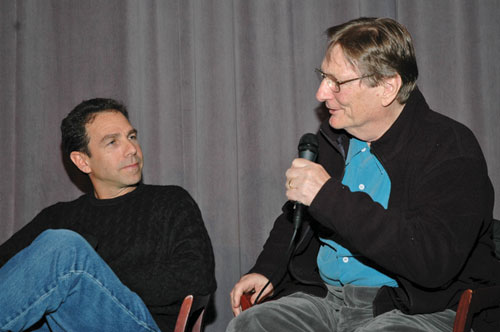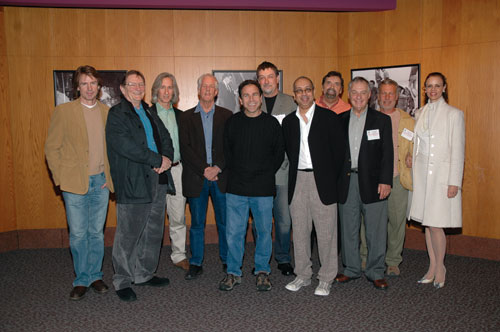DGA President Michael Apted opened the evening by announcing the inauguration of “Forty Years of Directorial Excellence” – a media campaign celebrating the artistry and quality of movies for television throughout the history of the genre. The campaign is set to launch with an event at the Guild in May. “The movie for television attracts directors that want to take risks,” said Apted, who also announced – to a round of applause – that “for the first time in many years, all five of this year’s nominated movies for televison films were shot in the United States with full DGA crews.”
Moderator Garris lauded this year’s impressive field of nominated works stating, “These aren’t television films, these are feature films that just happen to premiere on TV.” Garris then led Wolfe, Sadwith, and Schepisi in an informal discussion, starting with introductory remarks by the directors on the genesis of their vastly diverse projects.
Wolfe, a first-time director in the Movies for Television genre who is best known for his work in the New York Public Theatre, attributed his ability to transition to film to his use of the cinematic approach in his theatrical work. Lackawanna Blues, itself an adaptation of a stage show, is the narrative of the life of a bi-racial child growing up in 1960s New York, shot primarily in a home in the West Adams district of Los Angeles. In an interesting twist on runaway production, the city of Pasadena doubled for Toronto in the film. Wolfe sought to illustrate through the work the infrequently discussed consequences of integration, namely the loss of close-knit African American community. Casting for the project came relatively easy for Wolfe, who simply “called every actor [he had] worked with in the past 11 years.”
Casting, on the other hand, posed one Sadwith’s biggest challenges on Elvis – his second TV biopic based on the life of a music legend. Finding a suitable Elvis was a far more elusive endeavor than he first imagined. After their first choice, Jonathan Rhys-Meyers, turned down the role and they conducted an extended search and cast a raw, amateur look-alike with “uncanny similarities” to the king – only to have him subsequently withdraw due to religious reasons. Fortunately, by that time Rhys-Meyers was prepared to take the part.
Elvis was shot in Louisiana, the setting of some of the artist’s most famous performances, a place where the project could benefit from the state’s production incentives, and where replicating the 1950s was “easier in than you would think.”
Based on the Pulitzer Prize-winning novel by Richard Russo (Nobody’s Fool), Schepisi’s Empire Falls was shot on location in Maine. Schepisi credited a good script and actor Paul Newman’s work as executive producer for a relatively smooth production process. However, in explaining his keen eye for the small town, blue collar American life depicted in the film, Schepisi – who’s an Australian – explained it simply, “I benefited from being an outsider telling an American story.”
Following the discussion the nominees gathered with members and industry colleagues for an reception in the DGA Atrium.
